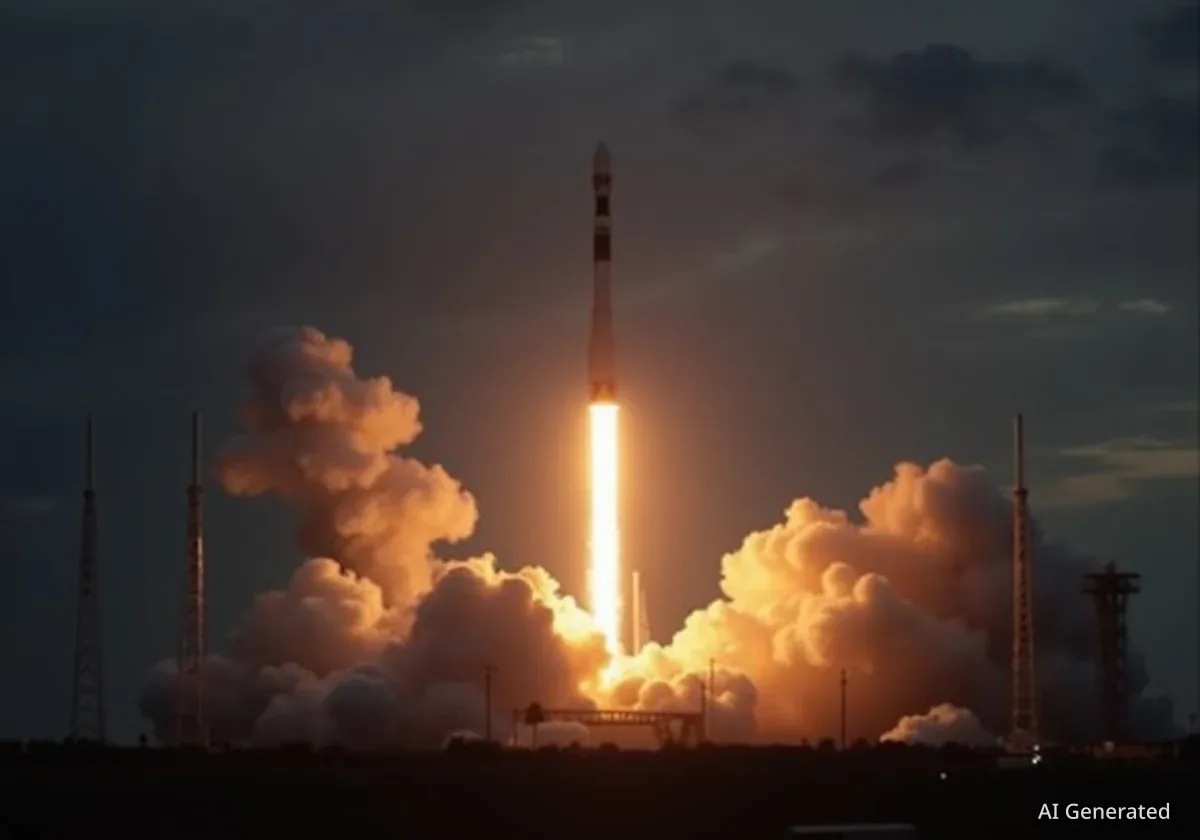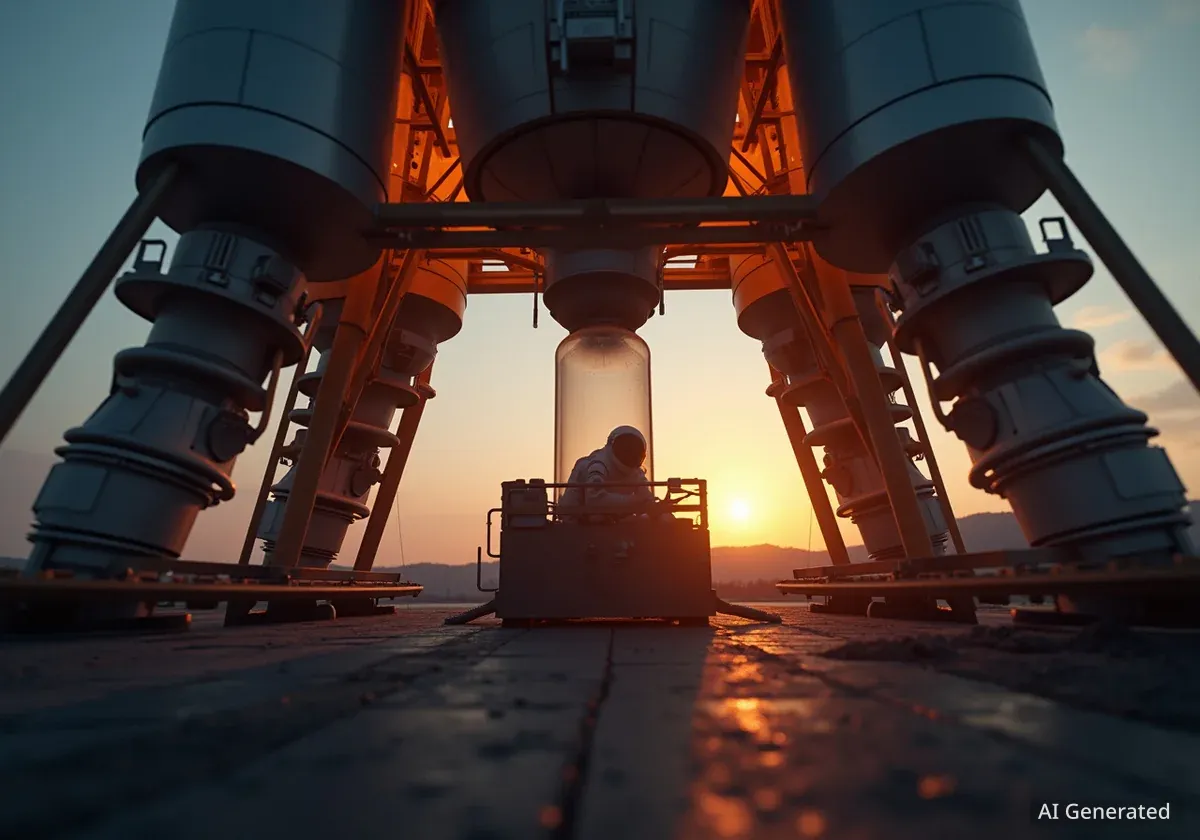SpaceX is preparing for its next satellite deployment, with a Falcon 9 rocket scheduled to lift off from Florida's Space Coast early Thursday morning. The mission, designated Starlink 10-61, aims to place 28 Starlink V2 mini satellites into low Earth orbit, further expanding the company's global internet constellation.
Key Takeaways
- Mission: Starlink 10-61 will launch 28 Starlink V2 mini satellites.
- Launch Vehicle: A flight-proven Falcon 9 rocket, booster B1092, on its seventh mission.
- Date and Time: Scheduled for Thursday, September 17, 2025, at 5:30 a.m. EDT (0930 UTC).
- Location: Space Launch Complex 40 (SLC-40) at Cape Canaveral Space Force Station, Florida.
- Weather: The 45th Weather Squadron forecasts a 65% chance of favorable launch conditions.
Mission Details and Timeline
The upcoming launch is another step in SpaceX's ambitious plan to build out its Starlink satellite internet service. Liftoff is targeted for 5:30 a.m. Eastern Daylight Time from the historic Cape Canaveral Space Force Station. The payload of 28 satellites is expected to be deployed approximately one hour after the rocket leaves the launch pad.
This mission continues the rapid launch cadence SpaceX has maintained throughout the year, adding capacity and coverage to its network that serves users across the globe. The V2 mini satellites represent a more advanced generation of the company's spacecraft, offering increased bandwidth and performance compared to earlier models.
The Starlink Constellation
Starlink is a satellite internet constellation operated by SpaceX, designed to provide high-speed, low-latency broadband internet in remote and underserved locations worldwide. As of mid-2025, the constellation consists of several thousand mass-produced small satellites in low Earth orbit that communicate with designated ground transceivers.
A Veteran Falcon 9 Booster
The first stage booster assigned to this mission is B1092, a veteran of SpaceX's reusable rocket fleet. This will mark its seventh flight, a testament to the reliability and cost-effectiveness of the company's reusability program. Reusing first-stage boosters is a cornerstone of SpaceX's strategy to lower the cost of access to space.
Previous Flights of Booster B1092
Booster B1092 has a diverse and notable flight history, demonstrating its versatility. Its previous six missions include:
- Three national security missions for the U.S. government.
- Two prior Starlink satellite deployment flights.
- SpaceX's 32nd Commercial Resupply Services (CRS) mission to the International Space Station.
This record highlights the trust placed in flight-proven hardware for a wide range of critical payloads, from commercial satellites to government and scientific missions.
Landing Milestones
If the booster landing is successful, it will be the 136th touchdown on the drone ship 'Just Read the Instructions' and the 506th successful Falcon booster landing overall for SpaceX.
Booster Recovery and Landing Operations
Following stage separation, the Falcon 9's first stage will perform a series of engine burns to reorient itself for atmospheric reentry. It will then attempt a precision landing on the autonomous drone ship, 'Just Read the Instructions', which will be positioned in the Atlantic Ocean.
The landing is scheduled to occur approximately 8.5 minutes after liftoff. A successful recovery will allow SpaceX to refurbish the booster for future missions, continuing the cycle of reusability that has revolutionized the launch industry.
"Reusability is fundamental to making humanity multi-planetary," is a concept frequently emphasized by SpaceX leadership, highlighting the core philosophy behind missions like this one.
Weather Forecast and Potential Concerns
The official launch weather forecast is provided by the U.S. Space Force's 45th Weather Squadron. They have predicted a 65 percent chance of favorable conditions during the launch window on Thursday morning. While generally positive, meteorologists are monitoring specific weather patterns that could pose a risk.
The primary concern cited in the forecast is the potential for cumulus clouds. According to the squadron's report, these clouds could create a flight hazard.
"Although these clouds are likely to be isolated-to-scattered, a concentrated band of moisture bringing more cloud cover and longer periods of unfavorable conditions to the Cape is possible," launch weather officers stated. They added that while most cloud tops should remain below flight-through limits, some could extend high enough to violate safety protocols, requiring the rocket to maintain a safe distance.
SpaceX has backup launch opportunities available if weather or technical issues cause a delay on the primary attempt.





